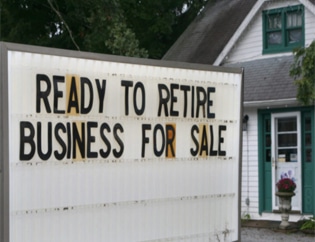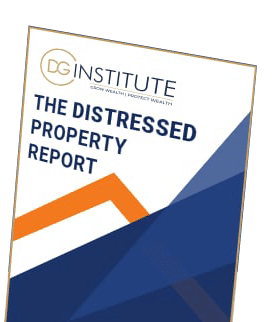Weekly Roundup: Keeping You Ahead in the Property Game
Published 11:43 am 19 Feb 2024

Welcome to this week’s edition of Property Edge, your one stop guide to the ever-evolving landscape of the Australian property market. In this issue, we delve into a range of topics that are shaping the future of real estate in Australia, from policy changes affecting foreign investment to the dynamics of buyer’s markets in our major cities. Let’s deep dive into the latest trends, challenges, and opportunities that property enthusiasts and investors need to know.
This Week in Property: Unveiling Affordable Suburbs Amidst Rising Costs
With the national median house value at 792K, finding affordable options in major capital cities can be challenging, especially for first-home buyers. However, recent data from PropTrack reveals pockets of affordability that offer hope to those looking to enter the property market.
Key Insights:
Darwin leads in affordability, with 90% of its suburbs boasting median house values below the national median. The suburb of Moulden stands out with a median house value of just 364K.
Hobart follows closely, with 70% of its suburbs under the national median. Gagebrook is the most affordable, with a median house value of 356K.
Perth has 64% of its suburbs below the national median, although the number of active listings has halved in the past five years.
Capital City Highlights:
Sydney, Australia’s priciest city, has only 8% of its suburbs below the national median. Buyers must venture at least 30km from the CBD to find more affordable options.
Canberra now surpasses Melbourne as Australia’s second most expensive city, with only 13% of its suburbs below the national median.
Most Affordable Suburbs for Houses:
In Greater Hobart, suburbs like Gagebrook, Herdsmans Cove, and Bridgewater offer the cheapest options.
Greater Darwin’s Moulden and Gray are among the top affordable suburbs.
Greater Brisbane, Greater Adelaide, and Greater Perth also feature suburbs with median house values well below the national median.
Affordability in Units:
The national median unit value stands at 624K, with Greater Darwin being the most affordable city for units, where all suburbs fall below the national median.
Greater Adelaide and Greater Perth also offer a high proportion of affordable units.
Looking Ahead:
While affordability remains a challenge in major cities like Sydney and Melbourne, other capital cities present opportunities for buyers seeking value within their budget. As the market evolves, understanding the dynamics of affordability and keeping an eye on emerging trends will be important for property investors and homebuyers alike.
The affordability crisis bubbled over in Parliament this week as the negative gearing argument again raised its head in the political landscape.
The Debate Over Negative Gearing:
This week we saw the ongoing debate surrounding negative gearing and capital gains tax concessions in Australia’s property market emerge again. With recent calls from the crossbench to overhaul these policies, it’s a topic that’s once again at the forefront of political and economic discussions.
Understanding Negative Gearing and Its Impact:
What is Negative Gearing?
Negative gearing occurs when the cost of owning an investment property, including interest payments and maintenance costs, exceeds the income it generates. This net loss can be deducted from an investor’s overall income, reducing their taxable income and, consequently, their tax bill.
The Role of Capital Gains Tax:
Capital gains tax concessions play a significant role in the appeal of negative gearing. In Australia, if an asset is sold after more than a year of ownership, only half of the profit is taxed. This can result in substantial capital gains for property investors, especially given the rapid appreciation of home prices in recent years.
Who Benefits?
Treasury analysis indicates that the majority of financial benefits from negative gearing and capital gains tax concessions go to high-income property owners. Additionally, statistically, these policies tend to favour men and individuals aged between 40-59.
The Cost to the Budget:
Tax concessions on rental properties are estimated to have cost the federal budget 24 billion last year, with negative gearing accounting for 2.7 billion.
The Push for Change:
Amidst the government’s efforts to introduce a new “help to buy” housing package, members of the crossbench, including the Greens, are advocating for an overhaul of negative gearing and capital gains tax concessions. They argue that these policies disproportionately favour investors over first-home buyers, exacerbating the housing affordability crisis.
Government and Opposition Stance:
Both Prime Minister Anthony Albanese and Opposition Leader Peter Dutton have expressed support for the current negative gearing rules, making any immediate changes unlikely. However, the Greens are leveraging their support for the “help to buy” legislation to bring the issue of negative gearing reform to the table once more.
One area where parliament is bullish when it comes to easing the affordability crisis is putting the brakes on the ability of foreigners to buy Australian properties in an attempt to raise the bar and send foreign investors to other more favourable countries when making a purchasing decision (thus reducing the inflated local demand).
Proposed Ban on Foreign Home Ownership:
The Federal government is focussed on proposed changes aimed at restricting foreign ownership of established homes. Amid concerns over money laundering and housing affordability, new measures are being considered to prioritise Australian citizens and permanent residents in the property market.
Addressing Money Laundering and Foreign Investment
Key Points:
Anti-Money Laundering Concerns:
Australia’s relatively lax anti-money laundering regulations have made the country’s real estate market attractive for laundering illicit funds.
Recent Government Measures:
Treasurer Jim Chalmers announced plans to triple the vacancy tax for properties held by overseas investors and triple the foreign investment fee for purchasing established homes. These changes aim to raise approximately 500 million in tax revenue and encourage foreign investment in new housing developments.
Proposed Ban on Foreign Ownership
Bill Introduction:
Two federal independent MPs, Senators Rebecca Sharkie and Andrew Gee, are proposing a bill to ban the sale of existing homes to foreigners for two years, similar to a policy implemented in Canada. The bill seeks to limit the market to citizens and permanent residents, prioritising their interests, especially those of first-home buyers.
Economic and Policy Considerations
Debate:
The proposal has sparked debate, with some economists warning that it could send a negative message to skilled migrants considering Australia. However, proponents argue that foreign buyers of existing homes do have a stimulatory effect on house prices, even if they are not the primary driver.
Further Reforms:
There are calls for the federal government to fully prohibit temporary residents from purchasing existing homes and to enact the global “tranche 2” anti-money laundering legislation governing real estate gatekeepers. This would address concerns about the influence of temporary migration on housing demand and the need for more robust anti-money laundering measures in the real estate sector.
Amid discussions on foreign ownership and market regulations, understanding the current state of the buyer’s market becomes increasingly important. In our final piece, we examine whether it’s truly a buyer’s market yet and where home prices are heading in key capital cities.
Assessing the Buyer’s Market Landscape
With an increase in property listings and varying auction clearance rates, the dynamics of the market offer insights into where home prices are heading now.
Supply and Demand Dynamics
Key Observations:
Accumulating Listings:
Sydney and Melbourne have seen a build-up of property listings, with some homes from late last year still on the market.
Strong Auction Results:
Early 2024 has shown strong auction clearance rates in Sydney and Melbourne, indicating robust buyer demand despite the increased supply.
Tighter Markets in Other Capitals:
Cities like Brisbane, Perth, and Adelaide have tighter markets, with demand keeping pace and potentially more price growth expected this year.
Market Sentiments and Expectations
Expert Opinions:
CoreLogic’s Tim Lawless notes that while listings have accumulated, especially in Melbourne, it’s too early to declare a definitive shift to a buyer’s market. The coming weeks will be crucial in determining the market’s direction.
Ray White’s Nerida Conisbee highlights the strong auction clearance rates as a sign of a heated market, with more properties coming to market due to increased buyer activity and changing interest rate outlooks.
St George Bank’s Besa Deda suggests that while conditions may be improving for buyers, competition remains fierce in certain areas, especially in Sydney. The prospect of future rate cuts could further influence market activity.
Navigating the Market
Considerations for Buyers:
Location Matters:
Competition may still be intense in desirable areas, requiring buyers to be strategic in their choices.
Renovated Homes:
There’s a perception that renovated homes in prime locations are performing well, but data indicates a broader market rebalance.
Interest Rate Impact:
The potential for rate cuts later in the year could play a significant role in market dynamics, influencing both supply and demand.
Thank you for joining us for another edition of Property Edge. As the property market continues to unfold with new developments and shifting dynamics, staying informed is key to making strategic decisions. Whether you’re a first-home buyer, seasoned investor, or industry observer, we hope this week’s coverage provides valuable perspectives to navigate the complexities of real estate. Stay tuned for more updates and analyses in our next issue, as we continue to keep you at the forefront of the property world.
NEW LIVE IN PERSON PROPERTY WORKSHOP: Our ONLY and FINAL live event!
Give us just two days and we will show you how to find and flip properties for cash profits with potentially little to none of your own money from the ‘4d’s’ of real estate investing: distress, deceased estates, downsizers and developers under duress. This isn’t just a workshop, it’s a game-changer with a target of doing 100K deal in next 6 months. We are covering topics that others might shy away from, but we’re about to rip the lid off.
- When: Saturday 2nd March & Sunday 3rd March 2024 (Hyatt Sydney)
- Time: 9:00 am to 5:00pm
Early Bird Alert: Exclusive Offer for Today’s Responders: $100 Voucher!
As a token of our appreciation for your continued support and enthusiasm, we are thrilled to offer an exclusive bonus for the first 10 people who enroll today. Use the code HYT and receive a $100 voucher when registering. It’s our way of saying thank you and ensuring you’re part of this unforgettable gathering. Click here to get all the details and to secure your seat.
You May Also like to Read
Pressing issues affecting homeowners and prospective buyers
Welcome to this week's edition of the Property Edge newsletter. As we navigate the ever-evolving landscape of Australia’s...
Why Australia Will Never Build Enough Homes
Welcome to this week's edition of the Property Edge newsletter. As we navigate through a rapidly evolving property...
Unlocking Potential: Uncovering Hidden Gems in Australia’s Property Market
Welcome to this edition of Property Edge, where we delve into the latest trends and insights shaping the Australian property...
Suburbs on the Rise: Property Searches Indicate Growth Potential
Welcome to the latest edition of Property Edge, where we delve into the dynamic world of real estate. In this issue, we...
Builder Insolvencies Threaten Government’s Housing Target
Welcome to this week's edition of Property Edge, where we delve into the current state of the property market through the...
Foreign Investment In Australia’s Residential Real Estate Is On The Rise
Welcome to this week's edition of Property Edge, where we delve into the latest trends and developments in the Australian...












